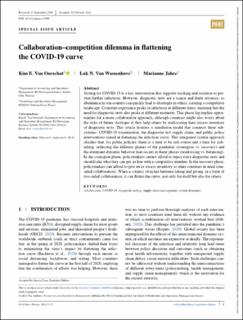| dc.description.abstract | Testing for COVID-19 is a key intervention that supports tracking and isolation to pre-vent further infections. However, diagnostic tests are a scarce and finite resource, soabundance in one country can quickly lead to shortages in others, creating a competitivelandscape. Countries experience peaks in infections at different times, meaning that theneed for diagnostic tests also peaks at different moments. This phase lag implies oppor-tunities for a more collaborative approach, although countries might also worry aboutthe risks of future shortages if they help others by reallocating their excess inventoryof diagnostic tests. This article features a simulation model that connects three sub-systems: COVID-19 transmission, the diagnostic test supply chain, and public policyinterventions aimed at flattening the infection curve. This integrated system approachclarifies that, for public policies, there is a time to be risk-averse and a time for risk-taking, reflecting the different phases of the pandemic (contagion vs. recovery) andthe dominant dynamic behavior that occurs in these phases (reinforcing vs. balancing).In the contagion phase, policymakers cannot afford to reject extra diagnostic tests andshould take what they can get, in line with a competitive mindset. In the recovery phase,policymakers can afford to give away excess inventory to other countries in need (one-sided collaboration). When a country switches between taking and giving, in a form oftwo-sided collaboration, it can flatten the curve, not only for itself but also for others. | en_US |

